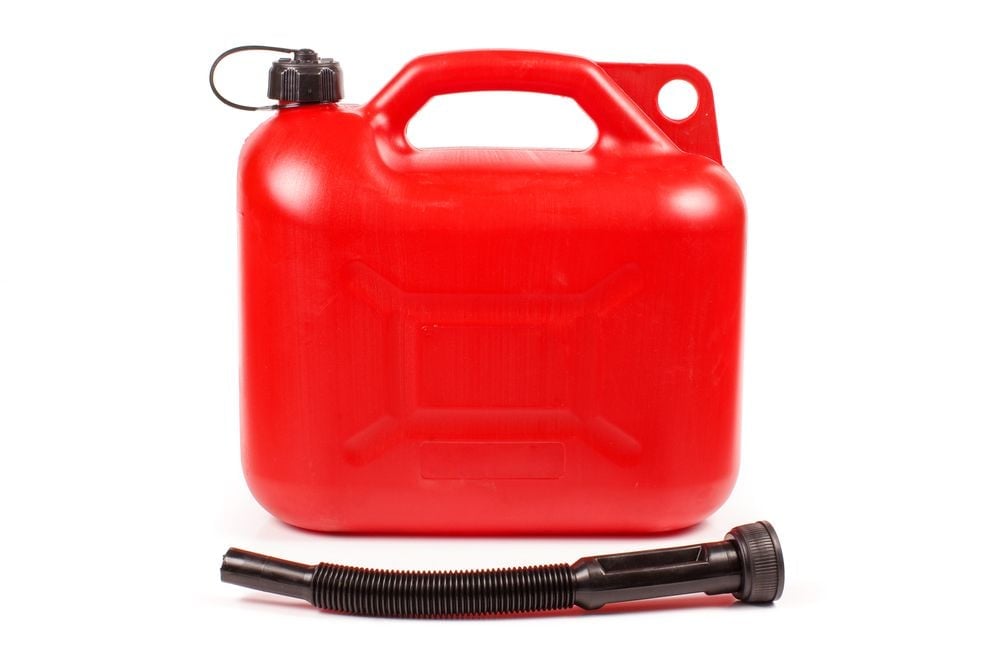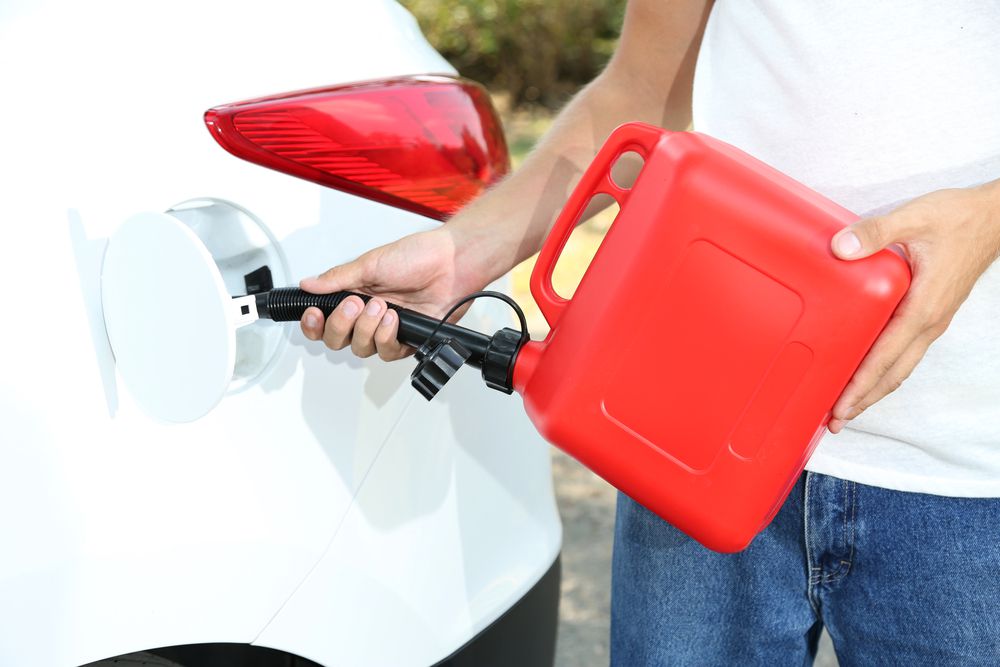
It's no secret that gas prices are constantly on the rise. But have you
recently purchased a container at a gas station and noticed heavy
inflation?
This may lead you to wonder why gas cans are so expensive.
Gas cans are so expensive due to a recent increase in government
regulations. With new requirements for plastic can's material quality,
prices have swelled. There are also supply and demand issues for jerry
cans, the most desired model. Gas cans typically come in 1 to 5-gallon
sizes, with an additional climb in pricing for larger cans.
Most people store gas cans to keep an extra gallon or two of fuel for their
vehicle. You may be interested in keeping the fuel tank of your car or
truck full without visiting a gas station, but new cans are becoming more
challenging to find at a reasonable price. Let's discuss all the reasons
why gas cans are so expensive.
 Gas containers have increased in price.
Gas containers have increased in price.
Why Are Gas Cans So Hard To Use Now?
More accurately called portable fuel containers, gas cans are so hard to
use now, mainly because of the regulations that the Environmental
Protection Agency (EPA) implemented in 2009. These include:
Outlawing Vent Hole
Due to environmental preservation reasons, purchasing a gas can with
additional venting holes is now illegal. Fuel now must exit the nozzle from
the only hole in the can. This makes pouring gas significantly slower;
completely impossible if the tank is full.
Permeation Resistant Container
This permits 0.3 grams or less of vapors in the air. This is another reason
for the new lack of vent holes.
Self Closing
The nozzle will return to closed when the gas can is not in use
automatically. This is, again, to prevent ventilation when the gas can is
not in use. These restrictions in vent holes are the main reason gas cans
have become so hard to use.
What Did The Government Do To The Gas Can?
The government has recently implemented regulations that have made using
modern gas can significantly more challenging.
When?
Gas can regulations from the government first came about in 2000 from the
California Air Resources Board. As mentioned above, the EPA caught on a few
years later. The EPA adopted the new regulations listed above in 2007,
which went into place in 2009.
Why?
The original idea was to prevent spillage, avoiding potential gas fires,
burns, and other hazards. There was also concern about hydrocarbon fumes
hurting the planet's already compromised environment. For these reasons,
the new safety regulations made more sense.
Results
Although the environmental benefits are sound, many people report that
these regulations have hindered their ability to use gas cans.
They are extremely slow pouring and create arguably more spillage due to
the awkward angles you must situate the can into to pour the gas. This
frustration also leads to people practicing unsafe methods, such as storing
fuel in milk jugs.
 Filling a car with gasoline from a portable container.
Filling a car with gasoline from a portable container.
Are All Gas Cans The Same?
The short answer is no; not all gas cans are the same. Gas cans vary
depending on their usage and the type of fuel they carry. There are also
different sizes, which include large jerry cans. There are two main types:
Type 1
Traditional gas cans use a funnel to dispense gas and have one opening.
This opening is used both to fill and dispense the fuel inside. They can be
found at most local hardware stores.
Type 2
The second type of gas can has two openings; one to dispense gas and one to
refill the can. These make filling and pouring easier, but due to the above
regulations, owning a gas can with a vent opening is no longer legal.
What Materials Can Gas Cans Be Made Of?
Containers used to store gasoline can be safely made of the following
materials.
Plastic
Plastic is one of the most popular and accessible materials for gas cans.
These cans are typically made of high-density polyethylene (HPDE), an
insulating material compatible with gasoline.
This type of sturdy plastic is resistant to rust and bacteria when used
properly and replaced frequently.
Metal
Metal is heavier and more durable than plastic. When it comes to storing
gasoline, metal cans offer the benefits of easy stacking and longer shelf
life.
How Are Gas Cans Differentiated?
The critical difference between gas cans is the color; each one indicates a
different fuel type.
-
Red - gasoline
-
Blue - kerosene
-
Yellow - diesel fuel
-
White/Beige - propane
Why Are Metal Gas Cans Better Than Plastic?
Metal gas cans are better for storing gasoline than plastic ones for a few
reasons:
Durability
Metal is harder to puncture or damage and can withstand high temperatures,
whereas plastic will melt. Gas can also leak into plastic after a few
months, making the metal more sustainable.
Safety
Storing gas cans is important for space management and safety. Metal cans
stack more efficiently on the ground, avoiding clutter and spills.
Long-Term Fuel Storage
Metal gas cans are ideal for storing gasoline for long periods. They
provide an extended shelf life in comparison to plastic cans.
No Plastic Chemicals
Plastic gas cans contain chemicals, such as lead, that can be harmful to
humans to be exposed to.
Disadvantages Of Metal Cans
Metal gas cans offer plenty of advantages over plastic models. However,
with new regulations, you may wonder whether metal gas cans are illegal.
While you can still use these models, they cost more than the alternative.
Metal is not necessarily flammable like plastic, but it will explode in the
event of a fire.
Do Plastic Gas Cans Expire?
Yes, plastic gas cans do expire. Plastic containers will need to be
replaced after three to six months. The stabilizer can be added to prolong
the shelf life by a few extra months, but at most eight months maximum.
Are Plastic Gas Cans Legal?
Plastic gas cans are still legal, but they must meet government
regulations. They must be less than 5 gallons, have a flash arresting
screen, and a spring closing nozzle. The Department of Transportation (DOT)
has stricter regulations than other organizations, such as the EPA. As a
result, the DOT will not approve most inexpensive plastic gas cans.
Conclusion
You may be accustomed to a single or double-opening gas can. In the past,
cans with additional ventilation were preferred but have now been outlawed
for safety reasons.
In addition to the different models you may be familiar with, there are two
main materials used to make gas cans: plastic and metal. Each comes with
its own set of advantages and disadvantages.
The recent economy of fuel cans has caused frustration for millions of
consumers looking to keep their gas tanks full at a reasonable price. New
safety cans are harder to pour and refill without the extra openings,
besides being more expensive.
The supply and demand of popular models like the jerry can have caused a
steep increase in price. Nowadays, it isn't easy to find a can online for
under $100, which is only expected to increase in the future.
While the requirement intended to limit fumes from gasoline and contribute
to reducing spills, it ended up causing a headache for vehicle owners. So
whether you are in the market for a plastic or metal can, you can expect to
pay more than you're used to.